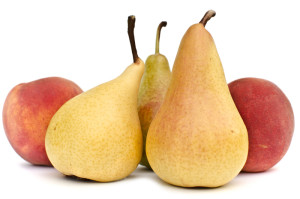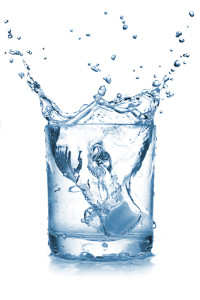High-Energy Diet: 5 Ways to Fuel Your Body
Energy can be elusive, but it doesn’t have to be. Pursue an energy diet and keep your energy level high with these food and beverage tips.
Our bodies, as many say, are like cars; they need the right kind of fuel to run well. That means an energy diet that provides the proper vitamins, minerals, and nutrients to keep your strength steady throughout the day.
You may already adhere to a high-energy diet. But if you find yourself routinely dragging through the day, consider the five following common-sense strategies.
Energy Diet Tip #1: Build in Balance
Protein is key, and carbohydrates are natural energy boosters. You even need some fat, particularly unsaturated fat from plant sources like avocado, but don’t go crazy in any of those areas.
- Protein has four calories per gram. In a healthy diet, according to Group Health (www.ghc.org), about 12 to 20 percent of your total daily calories should come from protein. Your body needs protein for energy and can store it for use when needed (mostly by your muscles).
- Carbohydrates also have four calories per gram. Keep your carb intake steady, focusing on healthy ones; slow-digesting whole grains (like multigrain bread and brown rice), lentils, and legumes work to steady your blood sugar and insulin levels, keeping your energy level at a constant. These healthy carbs also help to keep you from feeling hungry for long stretches. And remember to back off not-so-healthy carbs: soda, juice, and sweetened beverages (more on those in a minute) as well as candy, cookies, and cake.
- Fat has nine calories per gram; in a healthy and balanced energy diet, “about 30 percent of total daily calories should come from fat,” according to Group Health. “This means eating about 50 to 80 grams of fat each day.” Limit saturated fats (found in foods—dairy and meats—that come from animals) and trans fats (found in processed foods and many fried fast foods). Instead, opt for mono-unsaturated or poly-unsaturated fats, which are liquid at room temperatures (think olive, canola, and nut oils).
Energy Diet Tip #2: Don’t Skip Meals
How often do you rush out the door in the morning with just a cup of a coffee? Not a good idea. Give yourself natural energy foods to start your day; if you don’t have time for—or don’t want—a bigger breakfast, consider an oatmeal to go, some banana slices topped with peanut butter, a yogurt with berries, or a fresh-fruit (or vegetable) smoothie. (See our post “Healthy Energy Drinks: Use These 3 Ingredients in Delicious DIY Mixes.”)
There are days when you feel like you don’t have time for lunch, but you shouldn’t deprive your body of mid-day nutrition. Typically, bypassing lunch means pigging out at dinner time… and who needs to load up on protein, carbs, and calories that late in the day?
“Skipping meals may make you feel hungrier and lead you to eat more than you normally would at your next meal,” according to the National Institutes of Health. “In particular, studies show a link between skipping breakfast and obesity. People who skip breakfast tend to be heavier than people who eat a healthy breakfast.”
A study published in Journal of the American College of Cardiology features this summary: “Skipping breakfast is associated with an increased odds of prevalent noncoronary and generalized atherosclerosis independently of the presence of conventional CV risk factors.” In other words, skipping breakfast, according to research, is linked to plaque buildup in the arteries. (See also this report from CBS: “Heart Study Finds Another Reason Not to Skip Breakfast.”)
Energy Diet Tip #3: Forget the “Three Squares” Tradition
Not only should you avoid skipping breakfast or lunch, but it’s a good idea, experts say, to expand upon the classic “three square meals” custom. Make a mid-morning snack and a mid-afternoon snack part of your daily energy diet; they’ll help keep your energy level on an even keel.
For healthy choices, keep a small low-fat yogurt, a couple of whole-wheat crackers with peanut butter, veggies with hummus, or a bag of almonds, walnuts, or pistachios in your bag and replenish your body’s supply of carbs and proteins.
Energy Diet Tip #4: Hydrate Wisely
Diet and nutrition advice often focuses on food. But don’t overlook fluids. “What you drink is as important as what you eat,” the USDA advises. “Many beverages contain added sugars and offer little or no nutrients, while others may provide nutrients but too much fat and too many calories.”
One smart move for an energy diet is to drop soda—cold-turkey. A single 20-ounce bottle of Coca-Cola will put 65 grams of sugar in your body along with 240 calories from sugar, according to SugarStacks.com, while a 20-ounce Mountain Dew has 77 grams of sugar and 290 calories from sugar. Small 8-ounce cans of energy drinks like Red Bull and Rockstar give you around 30g of sugar.
Apple juice and orange juice, for the vitamins they promote, have around 25 grams of sugar in an 8-ounce bottle, as do non-diet bottles of iced tea.
And don’t be swayed into thinking that diet soda pop is “healthy”; a well-publicized study at Purdue University in 2013 found that artificially sweetened diet sodas are linked to obesity, type 2 diabetes, metabolic syndrome, and cardiovascular disease. A single can of diet soda every day, according to researchers at Purdue, “is enough to significantly increase the risk for health problems.”
So give up soft drinks and opt for water, which is more accessible, will keep you better hydrated, and will help you avoid extra calories and sugar. Oh, and don’t forget dairy; choose low-fat or fat-free milk or fortified soy milk, the USDA recommends: “Older children, teens, and adults need three cups of milk per day.”
Almond milk is a good alternative, but opt for the unsweetened and unflavored variety. It typically tastes just as good but doesn’t load you with extra sugar—and provides you with 25 percent of your daily vitamin D needs. Soy milk has more calories, typically—around 150, vs. 85 to 90 in almond milk, in an 8-ounce glass. But it does give you 7 grams of protein, vs. 1 gram in almond milk. As with almond milk, opt for unsweetened, unflavored soy milk.

Peaches and pears are among the accessible natural foods that supply you with vitamin K, among other nutrients.
Energy Diet Tip #5: Be Vitamin-Conscious, Naturally
Consider the 13 essential vitamins we need in a worthy energy diet: Are you getting the types of energy-boosting foods that provide them? Balancing your diet with the right vitamins will help keep your energy level steady. Here’s a sampling of food sources that supply each of the 13 essential vitamins:
- Vitamin A: Sweet potato, cooked carrots, dark leafy greens, squash, cantaloupe melon, sweet red peppers, tropical fruit (including mango).
- Vitamin B1/thiamin: Pork, ham, dark green leafy vegetables, fortified whole grain cereals, lentils, almonds and pecans.
- Vitamin B2/riboflavin: Milk, yogurt, cheese, fish, chicken, eggs, and asparagus, spinach and other green leafy vegetables.
- Vitamin B3/niacin: Chia seeds, sprouted beans, fortified cereals, whole wheat, legumes and peanuts, chicken, turkey, pork, and such fish as cooked yellowfin and Bluefin tuna, swordfish, mackerel, salmon, and halibut.
- Vitamin B5/pantothenic acid: Sweet potato, cauliflower, broccoli, beet greens, asparagus, turnip greens, bell peppers, cucumber, celery, chicken, turkey, salmon, beef, eggs, dried peas, lentil, mil, raspberries, pineapple, grapefruit, oranges, and tomatoes.
- Vitamin B6: Seafood, poultry, potatoes, fortified cereals, and green leafy vegetables.
- Vitamin B7/biotin: Turkey, pork, beef, mushrooms, eggs, avocados, Swiss chard, sunflower seeds, tuna, salmon, whole-wheat bread, peanut butter, almonds, bananas, and berries.
- Vitamin B9/folate: Leafy greens, all-grain breads, and all-grain rice and pasta.
- Vitamin B12: Animal foods like beef plus seafood fare like clams, mussels, crab, and “fin” fish.
- Vitamin C: Oranges, grapefruits, and citrus fruits, cantaloupes, strawberries, kiwi, papayas, tomatoes, bell peppers, Brussels sprouts, and peas.
- Vitamin D: Oily fish, cod liver oil, Portobello mushrooms, fortified cereals, eggs. (See also “Natural Food Sources of Vitamin D.”)
- Vitamin E: Raw seeds, hazelnuts, almonds, dark leafy greens like kale, turnip greens, and Swiss chard, avocados, shellfish, salmon, swordfish, herring, kiwi, blackberries, raspberries, peaches, nectarines, and apricots.
- Vitamin K: Green leafy vegetables including kale, spinach, collards, and beet greens, herbs like dried basil, parsley, and thyme, salad vegetables, pickles, soybeans, olive oil, dried fruits like blueberries, prunes, peaches, and pears.
Originally published in 2016, this post is regularly updated.



 Protein Needs as We Age
Protein Needs as We Age  Look Beyond the Scale
Look Beyond the Scale  Can Allergies Make You Tired?
Can Allergies Make You Tired? 
Replace the white bread in your kitchen with multigrain bread to add some energy to your diet.
© Elena Elisseeva | Dreamstime.com